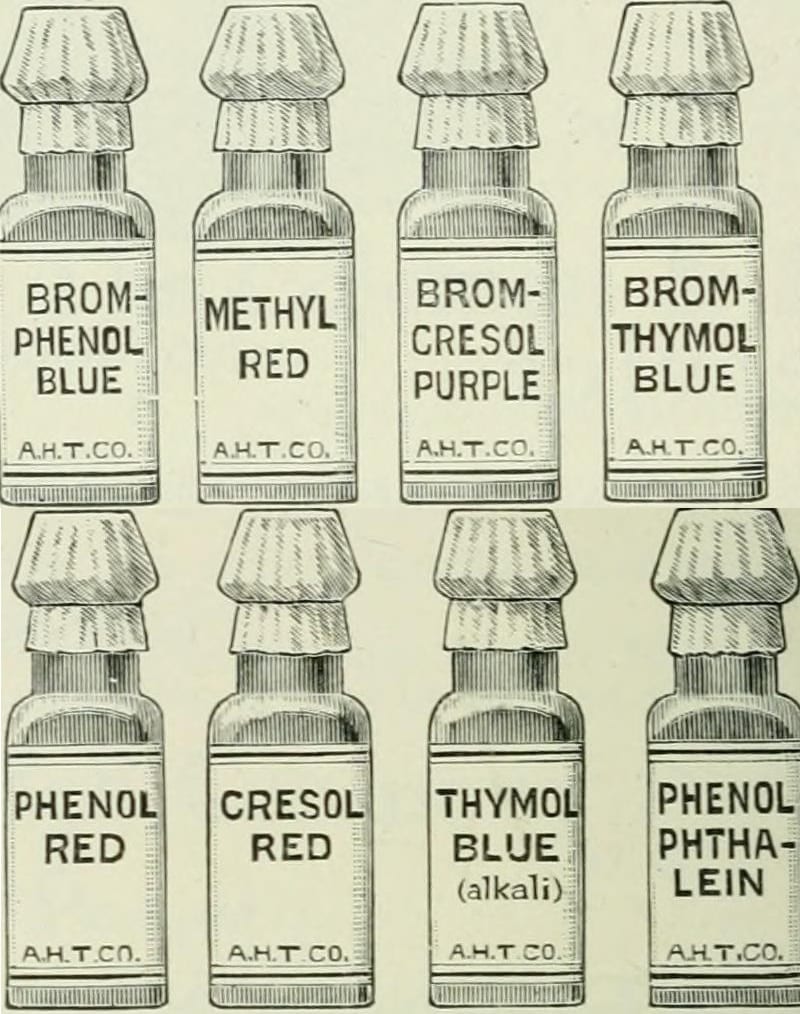To many a physician the word litmus brings back unpleasant memories from medical school, something to do with Bunsen burners, incomprehensible lectures on acid-base balance, or experiments going wrong and exploding in the chemistry lab. Litmus itself is a mixture of organic substances obtained from lichens and used as an acid-base indicator—even in nature, such as hydrangeas turning red when the soil is acid and blue when it is alkaline. The test was first used by alchemists in the high Middle Ages, and the word itself is of Proto-Indo-European origin, entering the English language around 1500 AD, and now also meaning a decisive test in which judgment is based on a single attribute, such as the political views of a candidate for office.
This image is a slightly tweaked version of a 1915 illustration in the The Journal of Laboratory and Clinical Medicine. Each bottle contains a different pH indicator—substances that change color when a certain pH is reached in a solution. Litmus is the most common of these indicators, but there are others, each with a specific range of pH values at which they change, such as phenolphthalein in the bottom right corner of this image, which may go through as many as three transitions of color depending on the ambient pH.
 |
| Edited illustration of pH indicators from page 731 of The Journal of laboratory and clinical medicine. 1915. Published by central Society for Clinical Research. Digitized to the Internet Archive by the University of Toronto. |

Leave a Reply